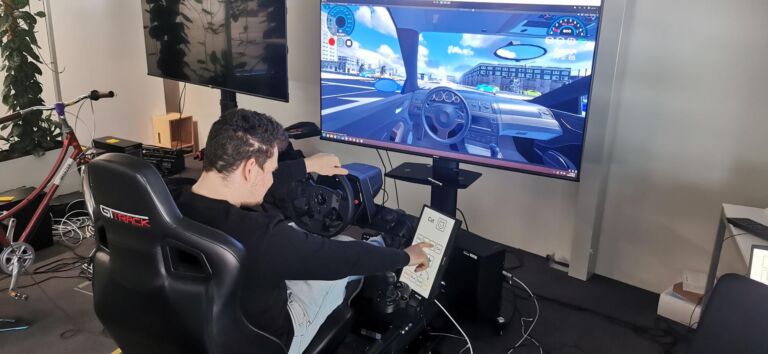AttDrive: Attention Management Systems for Supervisory Control in Driver-Vehicle Interacion (FFG)
Automated vehicles (AVs) promise safer, more efficient transportation, but current systems still require humans to supervise and take control when needed—particularly in SAE Level 2 and 3 automation. Monitoring these systems, however, is an inherently tedious and error-prone task, especially as drivers become distracted by non-driving related tasks like using smartphones or reading. This “supervisory control” challenge has already contributed to serious accidents and raises urgent questions about how humans and intelligent systems can cooperate safely and effectively.
AttDrive addresses these challenges by developing AI systems that support drivers in monitoring automation and resuming control smoothly when necessary. Building on our prior work with Reinforcement Learning (RL) and Computational Rationality (CR), this project investigates two innovative approaches: (1) learning strategies to influence drivers’ monitoring behavior based on individual attention patterns, and (2) using Generative AI (GenAI) to create personalized resumption cues—like summarizing a paused article or generating a realistic image of the driving scene.
Unlike traditional systems that rely on static rules or extensively supervised data, RL enables AttDrive to adapt flexibly to dynamic environments and user differences without pre-labeled training data. The system learns when drivers are most receptive to monitoring prompts or interruptions, reducing stress and distraction while improving responsiveness. Meanwhile, GenAI-generated cues help drivers resume both driving and secondary tasks more quickly and effectively to support safer multitasking without compromising situational awareness.
AttDrive will evaluate its approach in user studies with driving simulators, measuring improvements in monitoring behavior, task resumption speed, and stress reduction. If successful, the project will showcase how real-time, AI-driven attention management can be applied in real-world settings, promoting human-machine collaboration in domains like aviation, manufacturing, and robotics.


 Philipp Wintersberger
Philipp Wintersberger